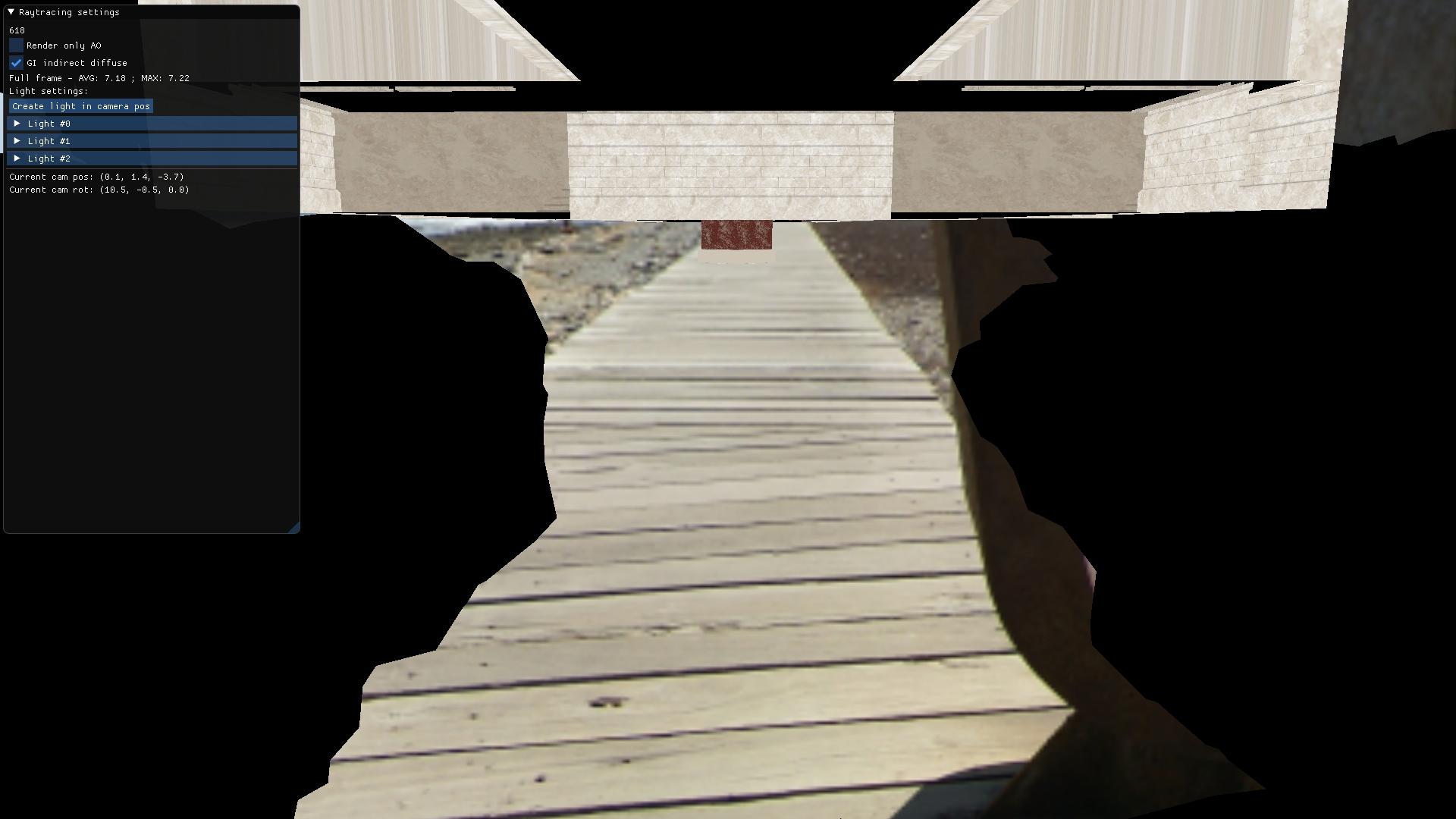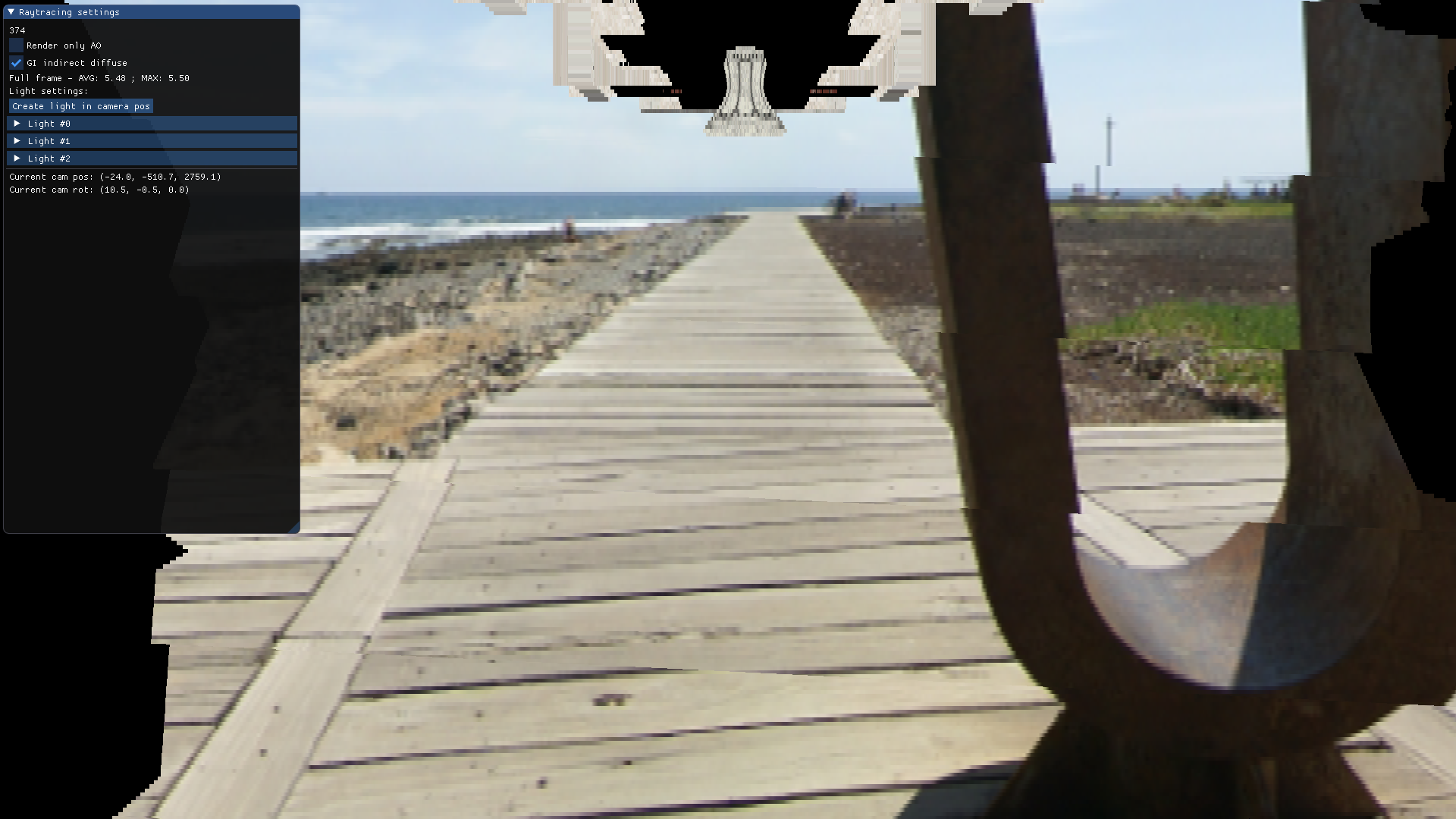I am using RT shader (DXR) to generate g-buffers with code below. There was no problems with smaller scene (pink room from cwyman tutorial - http://cwyman.org/code/dxrTutors/tutors/Tutor5/tutorial05.md.html ). However, when I moved to bigger scene (Sun Temple by Epic Games - https://developer.nvidia.com/ue4-sun-temple ), I've started noticing problems with texture sampling. Please compare textures at the end of this post. The greater the distance to world origin (0, 0, 0), the more jaggy artifacts appear and quality becomes worse.
At the beginning, I was suspecting acceleration structures. But skybox quality is becoming worse, so it's probably unrelated to AS.
inline void GenerateCameraRay(uint2 index, uint2 dimensions, float4x4 projectionToWorld, inout float3 origin, out float3 direction)
{
float2 xy = index + float2(0.5f, 0.5f); // center in the middle of the pixel.
float2 screenPos = (xy / (float2) dimensions) * 2.0 - 1.0;
// Invert Y for DirectX-style coordinates.
screenPos.y = -screenPos.y;
// Unproject the pixel coordinate into a ray.
float4 world = mul(float4(screenPos, 0, 1), projectionToWorld);
world.xyz /= world.w;
direction = normalize(world.xyz - origin);
}
[shader("raygeneration")]
void RayGen()
{
float3 rayDir;
float3 origin = g_sceneCB.cameraPosition.xyz;
// Generate a ray for a camera pixel corresponding to an index from the dispatched 2D grid.
GenerateCameraRay(DispatchRaysIndex().xy, DispatchRaysDimensions().xy, g_sceneCB.projectionToWorld, origin, rayDir);
RayDesc ray = { origin, 1e-4f, rayDir, 1e+38f };
RayPayload payload = { 0 };
TraceRay(SceneBVH, RAY_FLAG_NONE, 0xFF, 0, 1, 0, ray, payload);
}
[shader("miss")]
void Miss(inout RayPayload payload)
{
float3 rayDir = WorldRayDirection();
rayDir.z = -rayDir.z;
RTOutputAlbedo[DispatchRaysIndex().xy] = float4(skyboxTexture.SampleLevel(g_sampler, rayDir, 0).rgb, 0);
RTOutputNormal[DispatchRaysIndex().xy] = float4(0, 0, 0, 0);
RTOutputSpecRoughness[DispatchRaysIndex().xy] = float4(0, 0, 0, 0);
}








